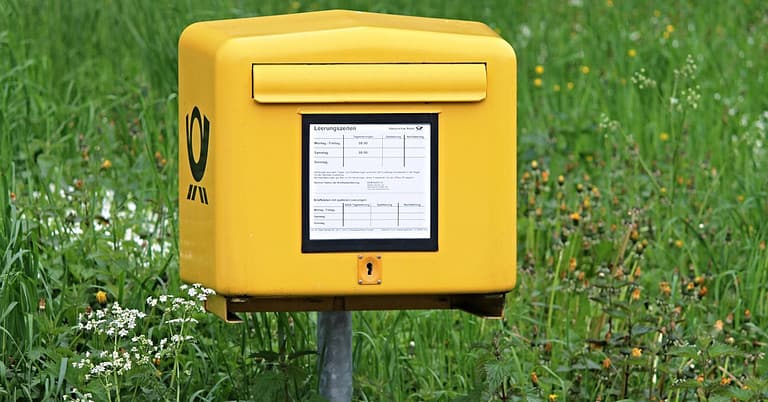How Does a Pellet Stove Work
Are you tired of traditional wood stoves that waste energy and require constant maintenance? Step into the future of heating with a pellet stove, the eco-friendly solution that keeps you warm and reduces your carbon footprint. Imagine a small cylindrical wonder, fueled by pellets made from sustainable resources or waste wood, working tirelessly to generate heat for your home. Like a well-oiled machine, this engineering marvel uses a drill to deliver the pellets to its firebox, where they are burned to create a cozy warmth. Dual fans blow this heat over exchangers, efficiently warming the stove and your room.
With a thermostat for precise temperature control and side vents to eliminate exhaust gases, there’s no need for a chimney. Installing a battery backup system ensures uninterrupted operation during power outages. Get ready to embark on an easy-to-operate, cost-effective journey toward sustainable heating with a pellet stove!
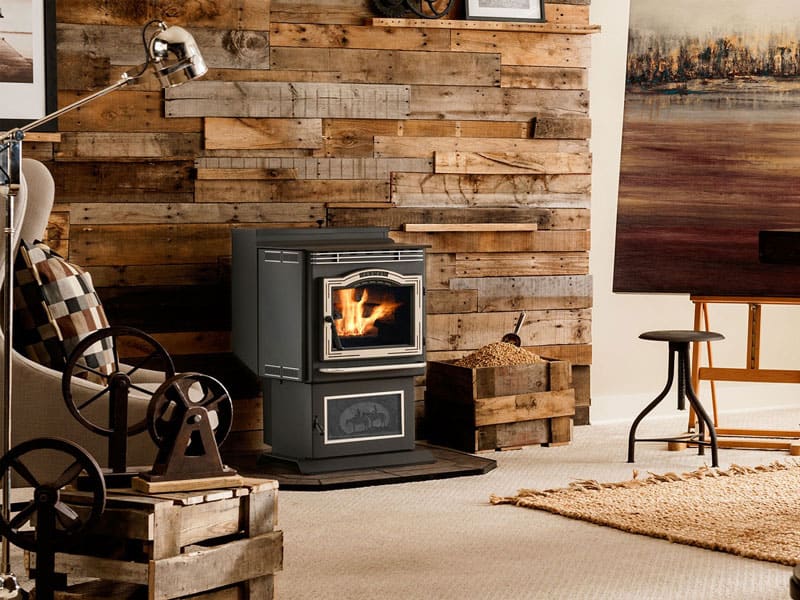
What is a Pellet Stove, and How Does It Work?
In a detailed overview of how a pellet stove works, the drill is crucial in delivering the fuel to the combustion chamber. The training, powered by electricity, transports the small cylindrical pellets from the hopper to the burn pot for efficient burning.
The combustion chamber facilitates pellet burning by providing a controlled and sealed environment where fresh air and fuel mix together to generate heat. The thermostat function in pellet stoves allows for precise temperature control. It measures the current temperature and adjusts the pellet feeding and blower speed accordingly to maintain a comfortable level of warmth in the room.
Additionally, the heat exchanger is an essential component that ensures adequate warmth. It transfers heat from the combustion chamber to circulating air through heatsinks or channels, effectively distributing warm air into the room through a front grille. Understanding how these key components work together provides insight into how a pellet stove operates efficiently and offers consistent heating for your space. (Learn How To Circulate Heat From Pellet Stove In Basement)
Detailed Overview of How a Pellet Stove Works
To fully understand how a pellet stove works, let’s dive into the detailed overview of its operation.
A pellet stove is designed to deliver heat by burning pellets stored in a hopper.
The combustion process occurs in the chamber, where air and fuel mix to generate heat.
To circulate this heat throughout the room, a blower is used.
Now let’s explore the role of the drill in the functioning of a pellet stove…
The Role of the Auger in the Functioning of a Pellet Stove
Imagine how effortless the drill is for transporting the fuel from the hopper to the combustion chamber, ensuring a steady and reliable heat source in your home. The drill plays a crucial role in the functioning of a pellet stove by delivering pellets to where they are needed for burning. It operates precisely, feeding consistent shots into the combustion chamber. This ensures efficient and controlled burning, maximizing heat output.
Now let’s explore how the combustion chamber facilitates pellet burning.
How the Combustion Chamber Facilitates Pellet Burning
Ah, the combustion chamber, where all the magic happens! It’s like a fiery dance floor, where fuel and oxygen combine to create a mesmerizing display of heat and energy. In a pellet stove, this is where the pellet burning takes place. The fuel in the form of pellets is delivered from the hopper into the combustion chamber. As air supplied through an air vent mixes with the shots, they ignite and burn, generating intense heat.
Now that you understand how the combustion chamber works, let’s explore another vital component – the thermostat function in pellet stoves.
Exploring the Thermostat Function in Pellet Stoves
Explore the thermostat function in pellet stoves and let it be your guiding heat conductor, ensuring comfort by orchestrating the perfect temperature symphony in your home. The pellet stove’s thermostat acts as the heating system’s control center. It monitors the temperature inside your home and adjusts the rate at which pellets are fed into the combustion chamber accordingly. This ensures that your home stays at a consistent and comfortable temperature.
Now, let’s delve into the importance of the heat exchanger to ensure adequate warmth.
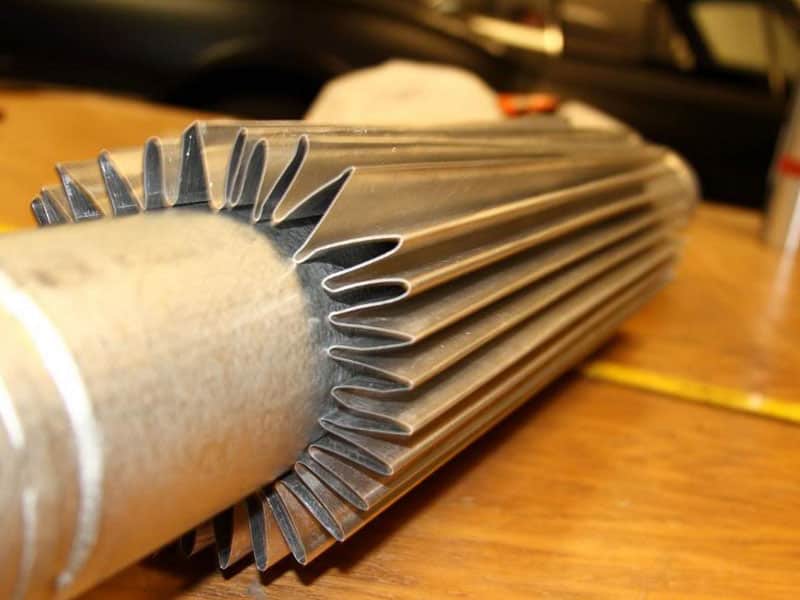
Importance of the Heat Exchanger to Ensure Adequate Warmth
To truly experience cozy warmth throughout your home, let the heat exchanger in your pellet stove work its magic. It efficiently transfers heat from the combustion chamber to every room corner. The importance of the heat exchanger cannot be overstated when it comes to ensuring adequate warmth. Here are five reasons why the heat exchanger is crucial for your pellet stove:
- Maximizes heat transfer efficiency
- Distributes warm air evenly
- It helps maintain a consistent temperature
- Reduces energy waste
- Improves overall heating performance
Now that you understand the heat exchanger’s importance let’s explore a pellet stove’s critical components.
Critical Components of a Pellet Stove
To understand how a pellet stove works, it’s essential to familiarize yourself with its key components. The pellet stove hopper is responsible for storing and delivering the fuel pellets to the combustion chamber.
The combustion blower plays a significant role in removing waste air from the chamber. At the same time, the burn pot is an integral part of every pellet stove by providing a location for the flames to originate and the pellets to fall into. Additionally, understanding how a pellet stove’s vent works and the role of the convection blower in distributing heated air are essential aspects of comprehending how these stoves operate. (Learn How Do Electric Fireplaces Work)
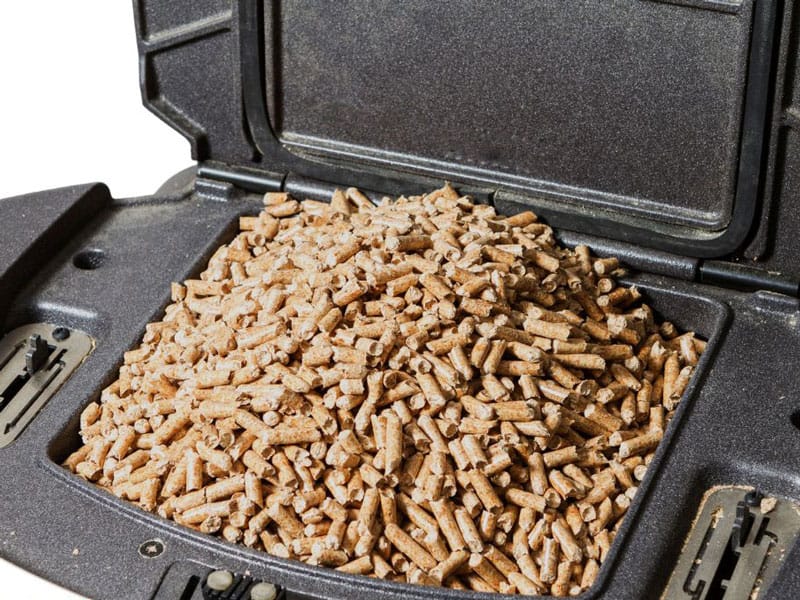
Understanding the Functions of a Pellet Stove’s Hopper
Understanding how a wood pellet stove works begins with knowing that the hopper is responsible for storing and delivering the fuel pellets to the combustion chamber, allowing for automatic and continuous heat production. Did you know an average household uses 2-3 tons of shots per heating season? The hopper is a crucial component of a pellet stove, and its size determines the number of pellets it can hold. An electric drill controls the ammunition feeding from the hopper to the burn pot.
Now let’s discuss the significance of the combustion blower in a pellet stove.
Significance of the Combustion Blower in a Pellet Stove
Imagine the power of a small fan that efficiently removes waste air from the combustion chamber, ensuring optimal burning conditions and heat production in your pellet stove. The combustion blower in a pellet stove plays a crucial role in maintaining proper airflow. It draws out exhaust gases and supplies fresh oxygen to the fire, promoting complete combustion and reducing emissions.
This essential component ensures that your pellet stove works effectively to provide cozy warmth.
Now let’s delve into another integral part of every pellet stove: the burn pot.
The Burn Pot: An Integral Part of Every Pellet Stove
The burn pot is where the magic happens, creating a mesmerizing dance of flames that fills your home with warmth and ambiance. The burn pot is located in the combustion chamber of a pellet stove. It’s designed to hold and ignite the wood pellets. A controlled amount of air enters the burn pot to fuel and sustain the fire.
Now, let’s delve into a detailed insight into how a pellet stove’s vent works.
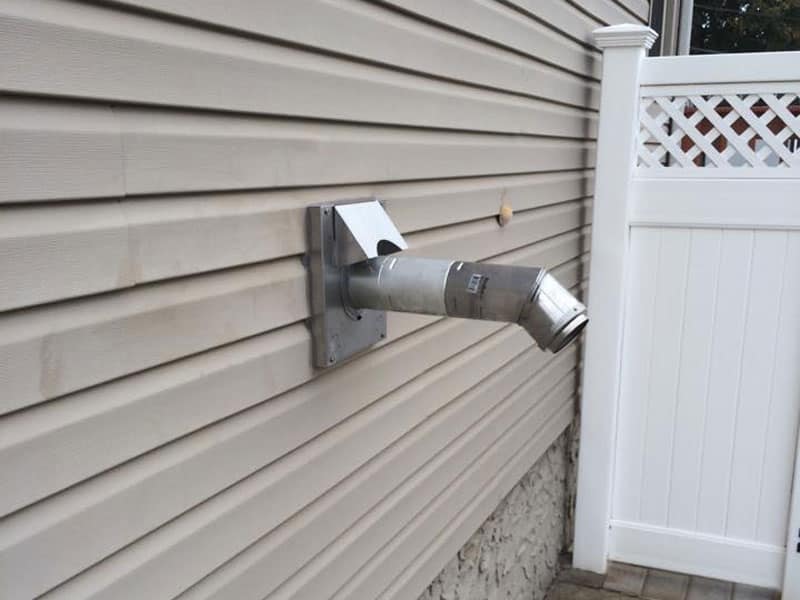
Detailed Insight into How a Pellet Stove’s Vent Works
To fully grasp the mechanics of a pellet stove’s vent, let’s look at how air flows through the system and how an astonishing 80% of heat is effectively distributed throughout your living space. In a pellet stove, the vent helps remove waste air from the combustion chamber while allowing fresh air to enter. It ensures proper oxygen supply for efficient pellet burning, producing maximum heat.
Now, let’s delve into the role of the convection blower in distributing heated air.
The Role of Convection Blower in Distributing Heated Air
Now, let me show you how the convection blower works to circulate the warm air produced by your pellet stove throughout your home. The convection blower is crucial in distributing heated air efficiently and effectively. (Read Can A Propane Tank Lay On Its Side)
Here are five key points about the convection blower in a pellet stove:
- The convection blower is located behind the combustion chamber.
- It pulls in cool air from the room and pushes it over the heat exchanger.
- The heat exchanger transfers heat from the combustion chamber to the circulating air.
- The warmed air is then forced into your living space through a front grille.
- The distribution blower ensures that warm air is evenly distributed, providing consistent heating throughout your home.
With a clear understanding of how the convection blower operates, let’s explore the advantages of using a pellet stove over traditional wood stoves.
Advantages of Using a Pellet Stove Over Traditional Wood Stoves
Regarding efficiency, pellet stoves excel in delivering heat to your living space. The distribution blower circulates warm air efficiently, maximizing the effectiveness of heat delivery. Pellet stoves are also environmentally friendly, as they burn clean and produce minimal emissions compared to traditional wood stoves.
Additionally, using a pellet stove can be cost-effective in the long run, as pellets are readily available and affordable. The autonomy and convenience of pellet stoves make them an attractive option for heating your home, with features like automatic ignition and temperature control.
Finally, pellet stoves prioritize safety with sealed combustion chambers and airtight doors to prevent potential hazards.
Discussing the Efficiency of Heat Delivery by Pellet Stoves
Pellet stoves efficiently deliver heat to the room through convection, using a distribution blower to circulate warm air and maximize the stove’s heating potential. The combustion chamber in the pellet stove generates heat by burning pellets made from waste wood or other sustainable resources. A distribution blower pulls air from the back of the furnace, which travels around the combustion chamber and is heated by heatsinks. This warm air is then forced into the room through a front grille, providing clean and efficient heat.
| Key Features |
|---|
| Efficient heat delivery |
| Distribution blower |
| Circulates warm air |
| Maximizes heating potential |
| Provides clean air |
Understanding the environmental implications of using pellet stoves will help you make an informed decision about their usage.
Understanding the Environmental Implications of Using Pellet Stoves
A pellet stove can have significant environmental benefits due to its clean-burning nature and carbon-neutral fuel from waste wood or sustainable resources. When you use a pellet stove, the combustion chamber efficiently burns the pellets, producing minimal emissions and pollutants. The hopper holds big bullets, ensuring continuous heat for your home. Now that you understand the environmental implications of using a pellet stove let’s discuss the cost-effectiveness of this heating option.
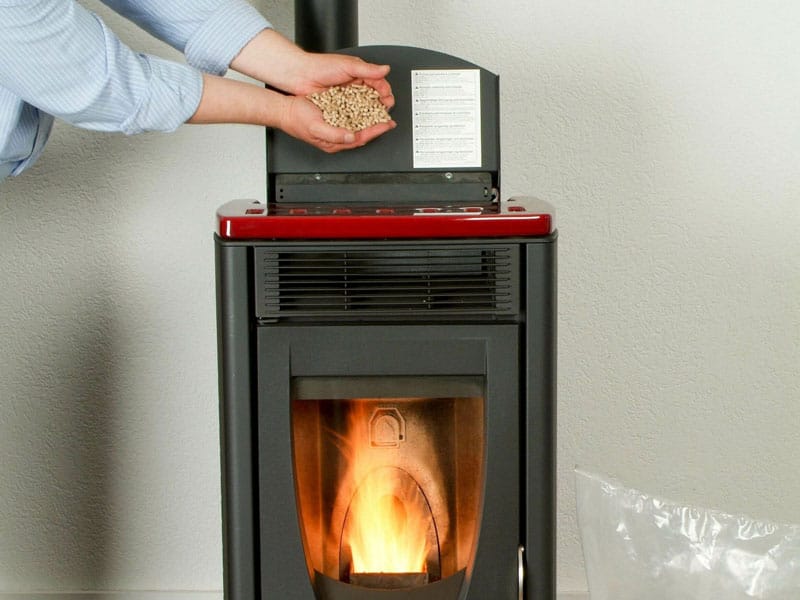
Cost-Effectiveness of Using a Pellet Stove for Heating
To truly understand the cost-effectiveness of a pellet stove, imagine sitting in your cozy living room on a chilly winter day, enjoying the warm and comforting heat emanating from your pellet stove, all while saving money on your heating bills. Pellet stoves work by burning compressed hardwood pellets to produce heated air. These pellets are carbon-neutral and made from sawdust and waste wood. A household uses 2-3 tons of shots per heating season to deliver heat efficiently and effectively.
Moving onto the next section about the autonomy and convenience pellet stoves offer…
The Autonomy and Convenience Offered by Pellet Stoves
Imagine how convenient it would be to have the autonomy of efficiently controlling and maintaining the warmth in your home with a simple touch of a button on your pellet stove. With pellet stoves, you can enjoy the convenience of automatic ignition, temperature control, and fuel delivery. Set your desired temperature on the thermostat, and the furnace will rest. No more hassle of constantly adjusting wood or dealing with messy ashes. Now let’s analyze the safety elements of pellet heating systems.
Analyzing the Safety Elements of Pellet Heating Systems
When it comes to the safety of pellet heating systems, you can rest easy knowing that these eco-friendly alternatives offer peace of mind with their built-in safety features. Pellet stoves need proper ventilation to ensure safe operation. They have a combustion blower that draws in outside air for efficient burning and keeps the fire burning consistently. Additionally, pellets are fed into the stove at a controlled rate to prevent overloading and potential hazards. Now let’s address some common questions about the operation of pellet stoves. (Read Why Is Propane Tank Freezing)
Common Questions about the Operation of Pellet Stoves
To understand how pellets are fed into the combustion chamber of a pellet stove, a screw auger is used to deliver the fuel from the hopper. The auger rotates and pushes the pellets toward the burn pot, where they ignite and generate heat.
The amount of pellets needed for a pellet stove depends on its size and heating capacity, but on average, a household uses 2-3 tons of shots per heating season. As for waste management, pellet stoves produce less ash than traditional wood stoves. The ash can be easily removed through an ash pan or drawer at the stove’s bottom. Some models also have self-cleaning mechanisms that help reduce maintenance.
When it comes to igniting the pellets, pellet stoves utilize different methods. Some models have an electric auto-ignition system that starts the fire automatically when you turn on the stove. Others require manual ignition using a propane torch or starter gel applied to the burn pot. The lifespan of a typical pellet stove can vary depending on usage, maintenance, and quality of materials. However, with proper care and regular cleaning, most pellet stoves can last 10 to 20 years before needing replacement or significant repairs.
How are the Pellets Fed into the Combustion Chamber?
To feed the pellets into the combustion chamber of a pellet stove, you load them into the hopper and let the drill do its job. The hopper is where the bullets are stored and can be filled with a bag or bucket of shells. The training is an electrically powered screw that moves the shots from the hopper to the combustion chamber. Once in the combustion chamber, the pellets are ignited and burned to generate heat.
Now let’s move on to how many pounds of pellets a pellet stove needs.
How Many Pounds of Pellets Does a Pellet Stove Need?
A pellet stove can devour a staggering amount of pellets, with some models requiring up to three tons per heating season. This high consumption is due to pellet stoves’ efficiency and heat output. Here’s how many pounds of pellets a pellet stove needs:
- The hopper stores the pellets, typically holding around 40 pounds.
- Pellets are delivered from the hopper to the combustion chamber through a drill.
- The pellets are burned in the combustion chamber, generating heat.
- Combustion exhaust is expelled through the venting system.
Now let’s explore what happens to the waste from a pellet stove.
What Happens to the Waste From Pellet Stove?
You are wondering what happens to all the waste from your pellet stove. You’ll be glad to know that pellet stoves produce very little ash and virtually no creosote, making maintenance a breeze! The combustion chamber in the pellet stove efficiently burns the pellets made from sawdust and waste wood. As the pellets ignite, they release combustion gases vented outside through a flue system.
Now let’s explore how the stove ignites the pellets.
How Does the Stove Ignite the Pellets?
Now that you know what happens to the waste from a pellet stove, let’s dive into how the furnace ignites the pellets. The ignition process is crucial for starting the fire in the combustion chamber. Most pellet stoves have an electric auto-ignition system that sparks and lights the pellets. However, some models require manual ignition using a propane torch.
Once ignited, the pellets in the hopper are delivered to the combustion chamber, where they fuel the fire.
Now, let’s explore the lifespan of a typical pellet stove…
What is the Lifespan of a Typical Pellet Stove?
Discover the durability and dependability of a typical pellet stove’s lifespan. Here are three key factors that determine how long your pellet stove will last:
- Maximum Efficiency: Regular maintenance and cleaning ensure that your pellet stove operates at its highest efficiency, prolonging its lifespan.
- Room Air: Proper ventilation and air circulation help prevent overheating and extend the life of your pellet stove.
- Pellet Stove Usage: The frequency and duration of use impact the wear and tear on components, affecting the overall lifespan.
Now let’s explore how to maintain and troubleshoot a pellet stove for optimal performance.
Maintaining and Troubleshooting a Pellet Stove
There are several vital points to remember when it comes to maintaining and troubleshooting a pellet stove. Understanding the maintenance requirements is crucial for ensuring optimal performance and longevity of the appliance. Typical troubles and solutions related to pellet stove heaters should also be familiarized, so you can quickly address any issues.
Additionally, learning tips for the efficient use of wood pellets, such as using the correct quantity depending on the size of your unit, can help maximize heat output while minimizing fuel consumption. Lastly, safety measures should always be considered when operating a pellet stove to prevent accidents or potential hazards.
Understanding the Maintenance Requirements for a Pellet Stove
To properly maintain a pellet stove, you must understand the maintenance requirements for this heating appliance. Here are some essential maintenance tasks to keep your pellet stove running efficiently:
- Regularly clean the ash pan and remove any built-up debris.
- Clean the chimney and flue system annually to prevent blockages.
- Inspect and clean the exhaust vent pipe for proper airflow.
Now that you know how to maintain your pellet stove, let’s move on to typical troubles and solutions related to pellet stove heaters.
Typical Troubles and Solutions Related to Pellet Stove Heaters
One common issue with pellet stove heaters is that they may not ignite properly, leading to a lack of heat production. Various factors, such as a clogged ignition system or a faulty igniter, can cause this. To resolve this problem, you can try cleaning the ignition system and replacing any damaged components. Additionally, ensuring that you’re using high-quality pellets and maintaining proper airflow in the stove can help prevent ignition issues.
Now let’s discuss some tips for efficiently using wood pellets in a pellet stove.
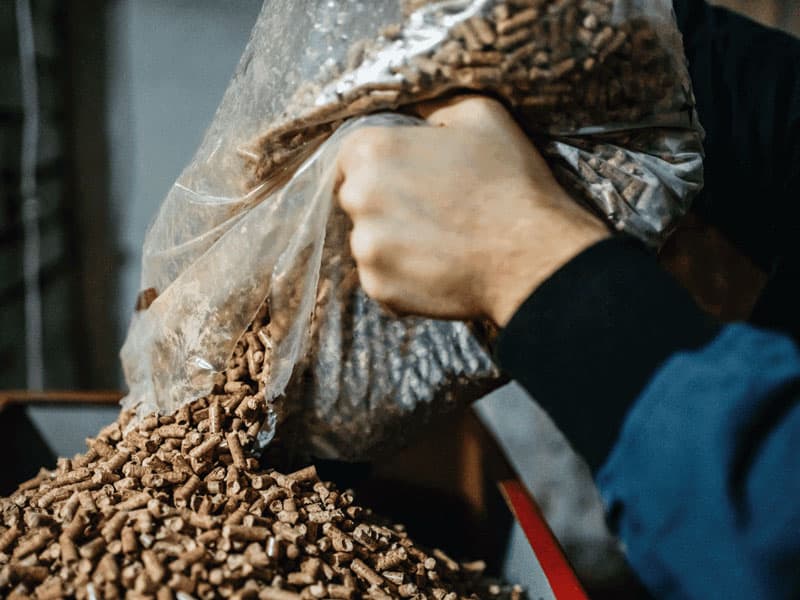
Tips for Efficient Use of Wood Pellets in a Pellet Stove
Maximize the efficiency of your wood pellets in a pellet stove to experience cozy warmth and cost savings. Many shots are delivered from the hopper to the burn pot within the stove. The ignition system starts the fire, and as it burns, hot air rises and is forced into the room through a distribution blower. Clean out ash regularly and use high-quality hardwood pellets to ensure optimal performance. Transitioning into the next section, it’s essential to consider the correct quantity of shots to use, depending on the unit size.
The Right Quantity of Pellets to Use Depending On the Size of the Unit
Achieving optimal performance in your pellet stove is all about finding the perfect balance of wood pellets based on the size of your unit, ensuring a comfortable and efficient heating experience. The size of your pellet stove determines the amount of heat it can produce. A larger unit requires more pellets to generate sufficient heat. Overloading the hopper with too many shots can lead to inefficient combustion.
Let’s discuss some measures to ensure safety while operating a pellet stove.
Measures to Ensure Safety While Operating a Pellet Stove
Following these measures is essential to ensure your safety while operating a pellet stove.
Before starting the stove, ensure the combustion chamber is clean and debris-free.
Use high-quality pellets designed explicitly for pellet stoves to prevent clogs and malfunctions.
Regularly inspect and clean the hopper to remove any accumulated dust or residue.
Keep flammable materials away from the stove and continuously monitor the heat levels using a thermostat for safe operation.
Conclusion
In conclusion, using a pellet stove is bright for eco-conscious individuals looking for efficient and sustainable heating options. With its advanced technology and innovative design, the pellet stove efficiently burns small cylindrical pellets made from waste wood or sustainable resources to generate heat.
The dual fans blow the heated air over exchangers, warming the stove and the room. These stoves provide convenience and cost-effectiveness by eliminating the need for a chimney and offering temperature control through a thermostat.
So why not embrace this ‘hot’ trend in home heating?


